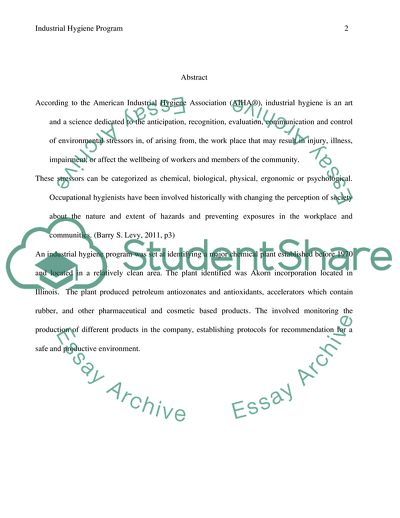Cite this document
(Akorn Pharmaceuticals Plant Hygiene Research Paper Example | Topics and Well Written Essays - 2750 words, n.d.)
Akorn Pharmaceuticals Plant Hygiene Research Paper Example | Topics and Well Written Essays - 2750 words. https://studentshare.org/environmental-studies/1850060-industrial-hygiene-program
Akorn Pharmaceuticals Plant Hygiene Research Paper Example | Topics and Well Written Essays - 2750 words. https://studentshare.org/environmental-studies/1850060-industrial-hygiene-program
(Akorn Pharmaceuticals Plant Hygiene Research Paper Example | Topics and Well Written Essays - 2750 Words)
Akorn Pharmaceuticals Plant Hygiene Research Paper Example | Topics and Well Written Essays - 2750 Words. https://studentshare.org/environmental-studies/1850060-industrial-hygiene-program.
Akorn Pharmaceuticals Plant Hygiene Research Paper Example | Topics and Well Written Essays - 2750 Words. https://studentshare.org/environmental-studies/1850060-industrial-hygiene-program.
“Akorn Pharmaceuticals Plant Hygiene Research Paper Example | Topics and Well Written Essays - 2750 Words”. https://studentshare.org/environmental-studies/1850060-industrial-hygiene-program.


